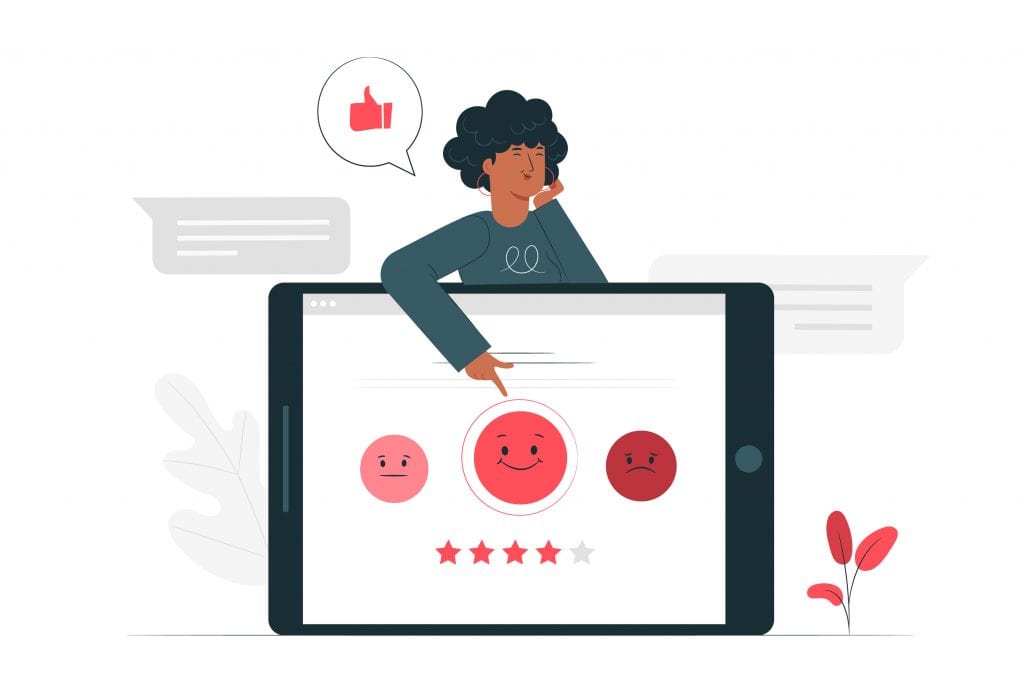Surveys are an excellent way for you to discover how your audience feels about your service/products. But there are inherent problems with their output unless you ask the right questions. In particular, surveys which lead the respondent will get distorted results. Here is an example.
Do you agree that black is the best product colour?
This question is leading the respondent. In most cases, the responses will be yes, but that is because you placed the idea of the colour in the mind of the audience.
How do leading questions skew surveys?
Leading questions are a danger in surveys because they manipulate results. Social constructionism explores the way the human brain sees how the world is built. Generally speaking, the human brain seeks out ways that conform to society. So if you ask a leading question, the respondents will likely respond in the way you want them to.
In studies of leading questions, researchers have found that asking one can skew the results by up to 23%.
Another problem that might occur is when you ask leading questions that defy social norms or are counterproductive to the thoughts of the audience, sometimes skewing results negatively. Respondents could be defiant and criticise your survey in a disproportionate way.
For instance, if you asked: do you agree that employees in accounting should have their pay rise frozen? You will get more people disagreeing, especially those who work in this area.

The dangers of leading questions in surveys
There are numerous dangers of leading questions in your surveys. For one, the skewed results will result in poor business decisions.
Another thing that can happen is that you can annoy your respondents. Whether you are using Tapapp to speak to your employees or customers, it is easy to annoy them with poorly written survey questions. If you annoy staff, retention levels could drop. If you annoy customers, they might leave altogether.
How to avoid leading questions in your surveys
Avoiding leading questions is a challenge, especially if you are hoping to get a particular response. To get accurate results from your surveys, you need to take specific actions instead. These actions include writing answers in a certain way and thinking about the structure of your questionnaires.
So here are some tips on how you can create surveys that do not include leading questions.

1. Be neutral
The first thing that you need to do is to neutralise your questions. Questions shouldn’t lean in one direction or another. For instance, asking whether someone likes or dislikes something (in all forms) is leading because you are telling them what emotions/opinions they should be feeling.
Use neutral phrasing instead to give people a chance to express their true feelings. If they like something, they’re likely to say so.
2. Avoid double-barrelled questions
Next, avoid double-barrelled questions. These are sentences that have two questions in them. Here is a double-barrelled question.
What do you think of the product? Is it fit for purpose?
Asking two different questions can sometimes sway the results in unintended ways. For instance, in the above question, the customer might like the product but think the product needs some improvements.

3. Use quantitative and qualitative data
You must use both quantitative and qualitative data within your surveys. Some questions should have scales where respondents can provide a specific value to help you improve data analysis and allow for an average to be calculated.
However, you will also need to have a significant number of qualitative data questions (those that allow the respondent to answer in their own words). You can use quantitative to gain a broad view of a subject e.g. on a scale of 1-10, how much would you recommend this product? Then you can use a qualitative question to follow up e.g. please explain why you gave this response.
4. Double-check results
When it comes to surveys, there are plenty of ways that you can insert double-check questions. These are questions that ask the same thing, differently, to enable you to check the first responses.
For instance, two questions could be:
Would you watch this movie with friends and family?
Would you recommend this movie as a way to spend time with friends and family?
Generally speaking, both of these should have the same answer.
5. Keep surveys short
Short surveys generally get better, less biased results because time is short for the audience. By the time they get past question 10, they will often get bored and want to end the survey.
Some research has shown that the longer your survey, the more misleading the responses will be. So be sure to keep survey lengths down to fewer than ten questions with less than eight words each (if possible).

6. Eliminate jargon
It does not matter if you are talking to customers or staff, avoid jargon at all times. Not everyone understands it, which can result in misleading answers that force poor business decisions.
If in doubt, get an external proofreader to check your questions for jargon and understanding. The better worded your questions are, the more reliable your responses are likely to be.
Avoid acronyms as well in your questions or any preformatted answers. You might know what they mean, but that doesn’t mean the respondents do. Even common acronyms are misread, especially if the respondent is in a rush and not paying much attention.
Conclusion
Surveys are an excellent tool for building a successful business. They help you to identify opportunities for improvement. However, you have got to ensure the returning data is accurate. One of the biggest challenges is avoiding leading questions. Use the tips above to help you and ensure that your surveys yield the best results.
Then, and only then, will you be able to make the best business decisions. Not only will you save money and improve profits, but you’ll retain key customers and employees as well.

More in our blog:
